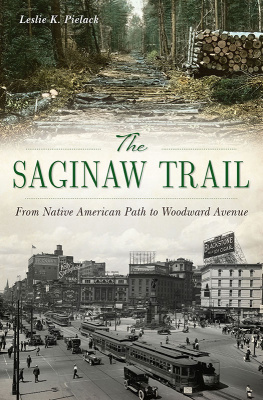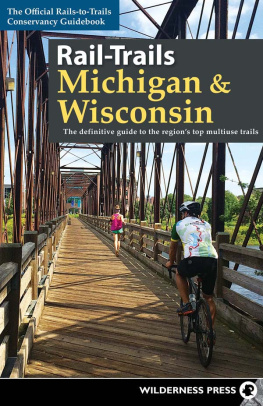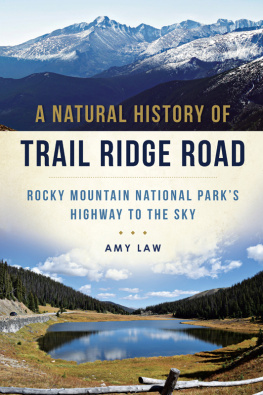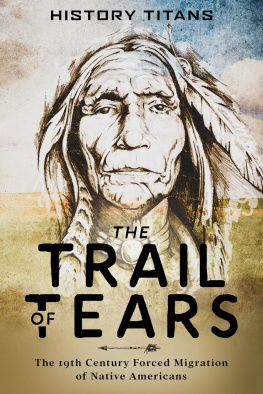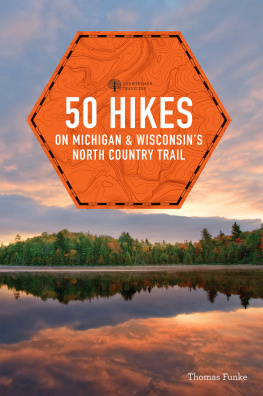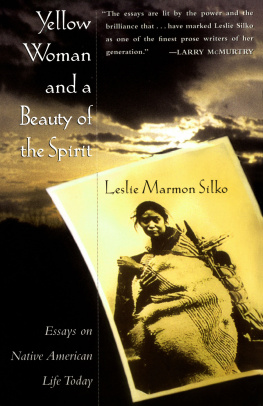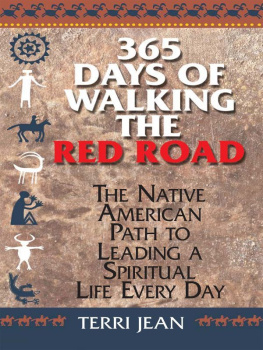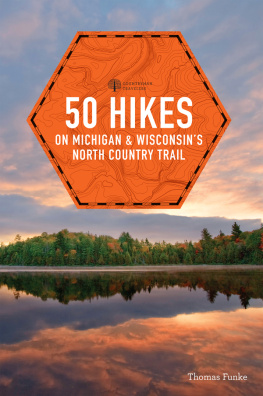

Published by The History Press
Charleston, SC
www.historypress.com
Copyright 2018 by Leslie K. Pielack
All rights reserved
Front cover, top: Corduroy road through the forest. New York State Archives (NYSA_A3045_A1694), digitalcollections.archives.nysed.gov/index.php/Detail/Object/Show/object_id/371; bottom: Looking up Woodward Avenue, Detroit, Michigan. Detroit Publishing Co., Library of Congress, www.loc.gov/item/2016814204.
First published 2018
e-book edition 2018
ISBN 978.1.43966.486.5
Library of Congress Control Number: 2018936092
print edition ISBN 978.1.46713.641.9
Notice: The information in this book is true and complete to the best of our knowledge. It is offered without guarantee on the part of the author or The History Press. The author and The History Press disclaim all liability in connection with the use of this book.
All rights reserved. No part of this book may be reproduced or transmitted in any form whatsoever without prior written permission from the publisher except in the case of brief quotations embodied in critical articles and reviews.
To Larry, Drew and Dylan
and to all my friends
who understand the importance of stories
CONTENTS
Preface
PEOPLE AND PATH
This book is about a paththe Saginaw Trailbut it is mostly about the people who followed the path or stopped along it to live their lives and build something for themselves and their descendants. It is their stories that are the focus of these pages. History is, of course, made up of facts, including dates and places and descriptive details of lists of events. Traditionally, these data are threaded together into a narrative to try to tell stories of the past; but it is the lament of many a schoolchild that studying facts is boring and tedious, making history and its people largely uninteresting. But instead of the facts determining what stories should be told, an alternative is to begin with the stories and let them give meaning to the facts.
Naturally, more facts are known about people who are famous and powerful, whose social status or governmental position meant that more documents and evidence are going to be available in the first place. Evidence about the poor, the worker, the disenfranchised, the unlettered is more elusive and implicit. However, in many cases, their stories in fact persist, either because of local folklore and oral traditions or cherished family narratives. Not to be confused with precise or verifiable facts, these stories provide a rich emotional context that imparts meaning, telling us what mattered to those at the timeand to the extent the stories are still told, what still matters.
As both psychotherapist and local historian, I have often been drawn to the human backdrop of historic facts and events. As a historian, I recognize that without proof or documentation, we cant say with certainty what motivations might lay behind individual behavior. But as a psychotherapist, I am trained to interpret and infer based on observation and understanding of individual psychology. In this book, I have applied this perspective by presenting the historical record of the Saginaw Trail in the greater context of the human condition. I have sought to place peoples behavior in relation to the cultural narrative of the times, accounting for the presence of bias in the surviving record. It must be remembered that the historical record is subject to errors and omissions because it depends on the fallible human beings who created that record. Documents can be improperly recorded, essential information forever lost to misfiling or language barriers; or unpopular notions can be suppressed or simply not recorded at all. Viewed through a more humanizing lens, we can see historical individuals in realistic human terms that make them and their world more accessible and familiar to us. This empathic connection offers a glimpse into anothers experience that helps us find meaning in their story. A reader who wants to personalize the past and wonders, What might it have been like? may find much appeal in this approach.
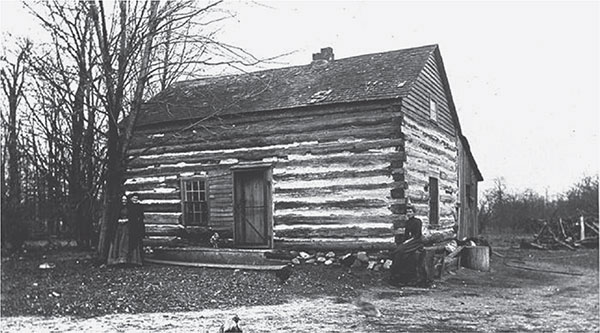
When the pioneer Fulton cabin was first built in the 1820s, it was surrounded by heavy forest just off the Saginaw Trail near what is now Eight Mile Road and Woodward. University of Michigan, Bentley Historical Library.
In the end, I believe it is not the Saginaw Trail or its modern manifestation as Woodward Avenue that matters as much as how its significance was shaped by the people who followed it, changed it and made it bigger than life. If we can better understand their world, we will better understand our fascination with this road and how it has become so great.
ACKNOWLEDGEMENTS
In the course of preparing this book, so many individuals and institutions have come to my aid that I regret I am not able to list them all. Each and every one has my highest regard and appreciation for all the assistance I received in researching, brainstorming, making image requests and generally asking for the almost impossible from people who were kind enough to stop what they were doing to help me. I have been saying for years now that museum and library people are the best! and that has been borne out in my process for this book.
Therefore, I would like to acknowledge them as a whole and honor the amazing and valuable service we, the public, receive when we undertake any effort to retrieve information about the past. We have access to really incredible historic and cultural resources and a virtual army of people poised to helppeople who are passionate about their collections and want, more than anything, to share them. They include:
- LOCAL HISTORY ORGANIZATIONS AND HISTORICAL SOCIETIES: They rarely get the attention they deserve, yet they are the most important resource in preserving the stories of real people in their communities. There is one in almost every town, and they are committed to keeping their local history alive. A prime example for Oakland County is the Oakland County Pioneer and Historical Society, one of the oldest of its kind in the state and a true gem.
- LIB RARIES WITH ONLINE COLLECTIONS (especially images and documents) made freely available to the public: What a gift university libraries and public libraries give us every day just by preserving and making unique documents and images accessible, and what a national treasure we have in the Library of Congress. In Michigan, the Clarke Historical Library holds some of the most historically valuable documents of everyday people, and it is unsurpassed in its Michigan Native American materials.
- SPECIAL COLLECTIONS ONLINE GENEROUSLY SHARED WITH THE P UBLIC: Such as the David Rumsey Map Collection, which has a very cool feature allowing users to superimpose maps to make comparisons over time; and the Michigan County Histories and Atlases online collection at the University of Michigan, which has a wealth of original publications of Michigans history available and easily searchable.
My sincere regard to these keepers of the past and to those who also keep the present, for it will be part of the past soon enough.
Introduction
OF GLACIERS AND SWAMPS
Our modern-day northern hardwood swamps, silt marshes and bogs are only a faint reflection of the enormous tracts of swamplands that dominated northern Ohio and southern Michigan just a few centuries ago. Now mostly gone, drained by ditches or channeled below the surface, we think of the land as the dry earth below our farms, subdivisions and city streets. We seldom have reason to imagine it any other way. Yet Michigans unique geophysical past is ever present in the landscape and has directly determined the path our states cultural history has taken.
Next page
